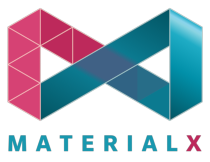 The Academy Software Foundation (ASWF) has accepted MaterialX as its seventh Foundation-hosted project. ASWF was founded to provide a selected set of open source code for content creation. Those technologies are available as open-source resources, meaning they are free to everyone, including source code and can be updated and changed. The ASWF was founded to maintain the code and handle changes through a controlled process. MaterialX is an open standard for the transfer of rich material and look-development content between applications and renderers.
The Academy Software Foundation (ASWF) has accepted MaterialX as its seventh Foundation-hosted project. ASWF was founded to provide a selected set of open source code for content creation. Those technologies are available as open-source resources, meaning they are free to everyone, including source code and can be updated and changed. The ASWF was founded to maintain the code and handle changes through a controlled process. MaterialX is an open standard for the transfer of rich material and look-development content between applications and renderers.
ASWF says that the newly accepted MaterialX project starts in incubation. During the incubation period, ASWF will help MaterialX achieve a certain adoption level in the industry. MaterialX will have to work to meet the requirements to finally get adopted by ASWF. Other incubating projects include OpenCue, OpenTimelineIO, and Open Shading Language.
According to ASWF, to achieve an ‘adopted project’ status, a project must demonstrate a healthy number of committers from a diverse contributor base, an ongoing flow of commits and merged contributions, achieve a Core Infrastructure Initiative Best Practices Badge, and complete an initial license scan of the project codebase, among other requirements.
At the Academy Software Foundation’s Open Source Days, its annual free virtual event, on Aug 4–5, attendees will get the latest updates on Academy Software Foundation projects and other popular open-source projects used for visual effects, animation, and image creation. Usually, Siggraph is the site for the Academy Software Foundation (ASWF) meetings to provide updates on the organization’s work over the year. Since there will be a full session about MaterialX at Open Source Days on Aug 5 at 12:50 pm PT, there will not be a MaterialX Birds-of-a-Feather session at Siggraph this year.
The press release follows:
MaterialX Joins the Academy Software Foundation as a hosted project
Developed by Lucasfilm, MaterialX is the open standard for the transfer of rich material and look-development content between applications and renderers.
The Academy Software Foundation (ASWF), the preeminent foundation for open source software development in the motion picture and media industries, today announced that MaterialX has been accepted by the Academy Software Foundation’s Technical Advisory Council (TAC) as the seventh Foundation-hosted project.
MaterialX originated at Lucasfilm in 2012, and it has grown into the central format for material description at Industrial Light & Magic (ILM) since the production of Star Wars: The Force Awakens. The project was released as open source in 2017, with companies including Sony Pictures Imageworks, Pixar, Autodesk, Adobe, and SideFX contributing to its ongoing development. In recent years, MaterialX has been incorporated into widely-used applications and standards including Maya, 3ds Max, Substance Designer, Arnold, Renderman, Autodesk Standard Surface, and Universal Scene Description.
“We initially developed MaterialX to solve a need we had across Lucasfilm and Industrial Light & Magic to have truly portable assets, with look-development information that could be shared across applications, both for real-time and offline, but it’s been even more exciting to see how it’s been embraced by software vendors and pipeline developers alike. With MaterialX becoming an official ASWF project, we look forward to seeing that momentum continue to grow and help solve one of our biggest industry challenges,” said Francois Chardavoine, VP of Technology at Lucasfilm and ILM.
“Integration into the Academy Software Foundation marks an important step forward for the MaterialX project, broadening the lines of communication with closely-related standards such as OpenColorIO and Open Shading Language, and providing a strong platform for new studios, companies, and teams to contribute to MaterialX in the future,” said Jonathan Stone, Senior Software Engineer at Lucasfilm’s Advanced Development Group and the lead developer of MaterialX.
“MaterialX is a crucial piece of technology as it addresses an industry pain point of smoothing the transfer of look development information between various applications and renderers. MaterialX solves the need for a common, open standard in this space and represents an enormous value to end-users within animation studios, visual effects studios, and third-party vendors,” said David Morin, Executive Director of the Academy Software Foundation. “With the support of the broader Academy Software Foundation community, we hope the ecosystem that supports MaterialX will grow, further validating the open standard within the industry.”
MaterialX is a key technology in the representation of materials in content pipelines for computer graphics. Its capabilities for expressing physically based shading models and generating shading code have strong synergy with the ASWF’s Open Shading Language, and its interpretation of color spaces is closely aligned with the approach in OpenColorIO and ACES.
The Academy Software Foundation will maintain and further develop MaterialX with oversight provided by a Technical Steering Committee, including members from Lucasfilm, Pixar, Sony, Autodesk, Adobe, Foundry, SideFX, Nvidia, and Epic Games. All newly accepted projects start in incubation while they work to meet the high standards of the Academy Software Foundation and later graduate to full adoption. This allows the Academy Software Foundation to consider and support projects at different levels of maturity and industry adoption, as long as they align with the Foundation’s mission to increase the quality and quantity of contributions to the content creation industry’s open-source software base.
Learn more about MaterialX and get involved:
Project Site: http://www.materialx.org/
GitHub: https://github.com/materialx
Twitter: https://twitter.com/MaterialXcg.
Hear about MaterialX at the Academy Software Foundation’s Open Source Days, on Aug 5 at 12:50 pm PT. Open Source Days is a free, virtual event where attendees will get the latest updates on Academy Software Foundation projects and other popular open-source projects used for visual effects, animation, and image creation.





